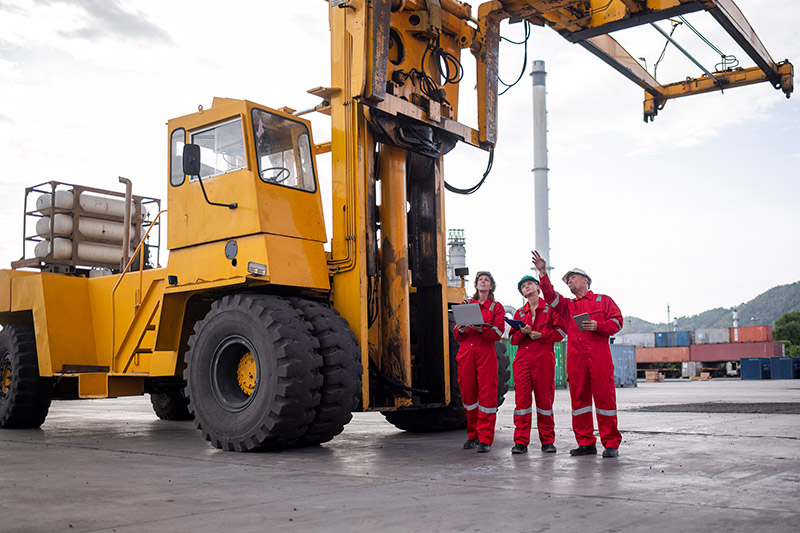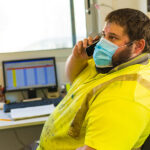Industrial machinery powers modern manufacturing, but it also presents some of the most serious hazards in the workplace. Every year, thousands of workers suffer severe injuries from contact with unguarded machinery—crushed limbs, amputations, and fatalities that could have been prevented with proper machine guarding. These accidents occur in seconds, often to experienced workers who momentarily let their guard down or attempt seemingly routine tasks without following proper procedures.
The tragedy of machine-related injuries lies not just in their severity, but in their preventability. Effective machine guarding can eliminate most caught-in and struck-by hazards while still allowing productive work to continue. Understanding and implementing proper guarding principles represents one of the most critical safety investments any organization using machinery can make.
Understanding Machine Hazards
Machinery creates multiple types of hazards that require different protective approaches. Point-of-operation hazards occur where the machine performs its primary function—cutting, forming, punching, or shearing materials. These areas pose the highest risk because they’re where workers must interact most closely with the machine during normal operations.
Power transmission hazards involve moving parts that transfer energy throughout the machine—belts, pulleys, gears, and rotating shafts. While these components aren’t typically the focus of work activities, their accessibility during operation, maintenance, or cleaning creates serious entanglement risks.
Secondary hazards arise from machine operations but occur away from the primary work point. Flying chips, sparks, or broken tooling can strike workers at considerable distances from the machine itself. Noise, vibration, and heat represent additional hazards that, while not immediately life-threatening, can contribute to accidents or long-term health problems.
Fundamental Guarding Principles
Effective machine guarding follows established principles that balance worker protection with operational needs. Guards must prevent access to hazard zones while allowing necessary work activities to proceed efficiently. This requires careful consideration of how workers interact with machinery during normal operations, setup, maintenance, and troubleshooting.
The most effective guards eliminate hazards through design rather than relying on worker behavior. Fixed guards that completely enclose hazard areas provide maximum protection when operational needs allow. These guards require tools for removal, ensuring they remain in place during normal operations while still permitting access for maintenance activities.
Interlocked guards automatically stop machine operations when opened, preventing exposure to moving parts during access. These systems work well for operations requiring frequent access to guarded areas, though they require careful design to prevent bypassing and regular maintenance to ensure reliability.
Adjustable guards accommodate different product sizes or operational requirements while maintaining protection. These guards must be designed so that any adjustment that allows larger material also increases the distance between the operator and the hazard zone.
Types of Protection Systems
Different operational requirements call for different guarding approaches. Barrier guards physically prevent access to hazard zones through solid panels, screens, or enclosures. These guards work well for hazards that don’t require frequent access and provide reliable protection regardless of worker behavior.
Presence-sensing systems detect when workers enter hazard zones and automatically stop machine operations. Light curtains, pressure mats, and proximity sensors can provide protection while allowing rapid access for loading, unloading, or adjustment activities. However, these systems require careful installation, regular testing, and backup protection for maintenance activities.
Pull-back and restraint systems physically prevent workers from reaching hazard zones during machine operations. These systems attach to the operator’s hands or arms and either pull them away from danger during machine cycles or prevent them from reaching hazard areas entirely. While effective, these systems limit operator mobility and work best for repetitive operations with predictable motion patterns.
Two-hand controls require operators to use both hands to activate machinery, ensuring hands are away from hazard zones during operation. These controls must be designed to prevent single-hand or forearm operation and positioned so that operators cannot reach hazard areas while maintaining control activation.
Implementation and Maintenance
Successful machine guarding programs require more than installing protective devices—they need comprehensive implementation strategies that address selection, installation, training, and ongoing maintenance. Guard selection should consider the specific hazards present, operational requirements, maintenance needs, and worker capabilities.
Installation must ensure that guards actually eliminate access to hazard zones rather than creating a false sense of security. This requires careful measurement of reach distances, consideration of tools or materials that might extend worker reach, and evaluation of potential access points from all directions.
Worker training must cover not just how to operate guarded machinery safely, but why guards are necessary and what happens when they’re bypassed or removed. Workers need to understand that guards protect them from hazards that can cause injury faster than human reflexes can respond.
Regular inspection and maintenance ensure that guards continue providing protection over time. Mechanical guards can loosen, shift, or deteriorate. Electronic systems require testing to verify proper operation. Maintenance procedures should include specific checks for guard condition and proper operation.
Common Implementation Challenges
Organizations often struggle with guards that interfere with productivity or maintenance activities. These challenges typically indicate inadequate analysis during guard selection rather than fundamental incompatibility between safety and efficiency. Effective solutions usually involve redesigning workflows, selecting different guard types, or modifying machinery to accommodate both protection and operational needs.
Worker resistance to guarding often stems from guards that make work more difficult without providing obvious benefits. Involving workers in guard selection and design helps ensure that protection systems work with rather than against natural work patterns.
Cost concerns about guarding should be evaluated against the potential costs of machine-related injuries. A single serious accident can cost hundreds of thousands of dollars in direct and indirect expenses, while comprehensive guarding systems typically represent modest investments relative to machinery costs.
Building a Guarding Culture
Effective machine guarding requires organizational commitment beyond compliance with regulations. This means viewing guards as essential machinery components rather than afterthoughts, involving safety considerations in equipment purchasing decisions, and maintaining zero tolerance for guard bypassing or removal.
Regular evaluation of guarding effectiveness through incident analysis, near-miss reporting, and proactive hazard assessment helps identify improvement opportunities before accidents occur. The goal should be continuously improving protection while maintaining operational efficiency, recognizing that effective guarding often improves both safety and productivity by reducing variability and uncertainty in machine operations.



